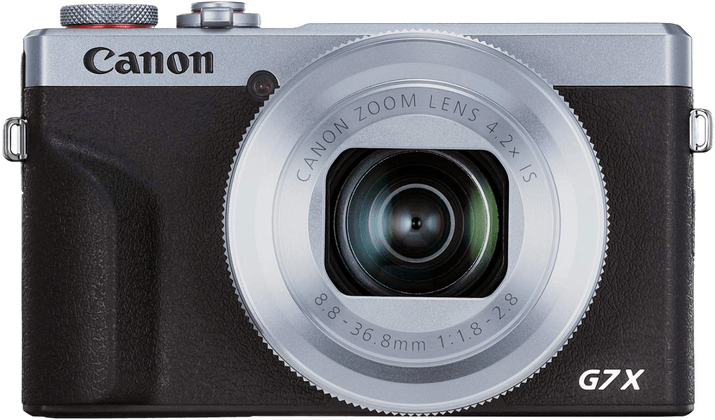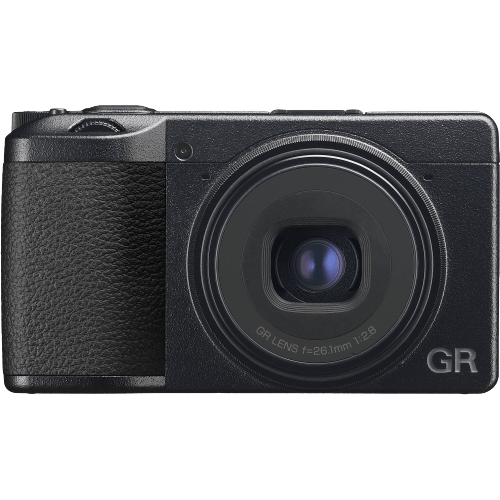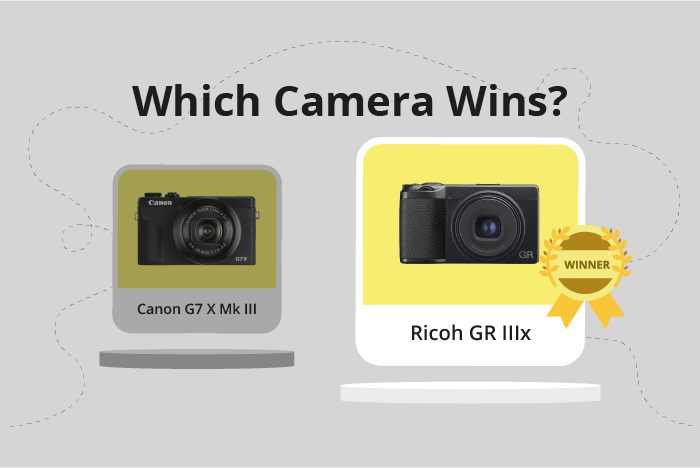Canon PowerShot G7 X Mark III vs Ricoh GR IIIx Comparison
Canon PowerShot G7 X Mark III

Ricoh GR IIIx

The Ricoh GR IIIx outperforms the Canon PowerShot G7 X Mark III with a score of 66/100 compared to Canon’s 59/100. Both cameras are compact and were released in 2019 and 2021, respectively. They share similarities in size, with the Canon measuring 105 x 61 x 41mm and the Ricoh at 109 x 62 x 35mm.
The Ricoh GR IIIx is superior due to its higher score, and it is also lighter, weighing 262g compared to Canon’s 304g. However, the Canon PowerShot G7 X Mark III has a more affordable launch price of $749, compared to the Ricoh’s $999.
While the Ricoh GR IIIx has a higher score and weighs less, the Canon PowerShot G7 X Mark III offers a more budget-friendly option without compromising too much on quality. Ultimately, the choice between the two cameras depends on the individual’s preferences and budget.
Canon PowerShot G7 X Mark III vs Ricoh GR IIIx Overview and Optics
The Ricoh GR IIIx outperforms the Canon PowerShot G7 X Mark III in optics with a score of 68/100, an 11-point lead over the Canon’s score of 57/100. Both cameras have CMOS sensors, fixed lens mounts, and image stabilisation. They also share a similar shooting speed, with the Canon at 30 and the Ricoh at 4.
The Ricoh GR IIIx excels with its 24-megapixel resolution, APS-C sensor size, and a DXOMARK score of 76 for its sensor. These features contribute to the Ricoh’s superior image quality and detail capture. The GR Engine 6 processor also ensures fast and efficient image processing.
On the other hand, the Canon PowerShot G7 X Mark III has a 20-megapixel resolution, a smaller 1″ sensor size, and a lower DXOMARK score of 58 for its sensor. While its Digic 8 processor is reliable, it does not match the performance of the Ricoh’s GR Engine 6. However, the Canon boasts a significantly higher shooting speed of 30, which may be appealing to some users for capturing fast-moving subjects.
Despite the Canon’s advantage in shooting speed, the Ricoh GR IIIx’s higher resolution, better sensor size, and superior DXOMARK score make it the winner in terms of optics. The Ricoh offers better image quality and detail capture, making it a more suitable choice for photographers who prioritize these factors. The Canon PowerShot G7 X Mark III may still appeal to users who value shooting speed, but it falls short in overall optical performance compared to the Ricoh GR IIIx.
Canon PowerShot G7 X Mark III vs Ricoh GR IIIx Video Performance
The Canon PowerShot G7 X Mark III outperforms the Ricoh GR IIIx in video capabilities, scoring 91 out of 100, while the Ricoh GR IIIx scores 70. Both cameras share some common features, such as time-lapse functionality built-in. However, the Canon PowerShot G7 X Mark III has superior specs that contribute to its higher score.
The Canon PowerShot G7 X Mark III boasts a maximum video resolution of 4K, with dimensions of 3840 x 2160. This resolution is significantly higher than the Ricoh GR IIIx, which has a maximum video resolution of Full HD, with dimensions of 1920 x 1080. The Canon G7 X Mark III also has a higher maximum video frame rate of 120fps, doubling the 60fps offered by the Ricoh GR IIIx. These factors make the Canon PowerShot G7 X Mark III the better camera in terms of video quality and performance.
On the other hand, the Ricoh GR IIIx does not offer any significant advantages in video capabilities over the Canon PowerShot G7 X Mark III. Both cameras have time-lapse functionality, but the Ricoh GR IIIx falls short in other areas, such as resolution and frame rate.
Ultimately, the Canon PowerShot G7 X Mark III is the superior camera for video capabilities due to its higher video resolution and frame rate. The Ricoh GR IIIx, while not as strong in this area, still offers time-lapse functionality. However, those seeking higher quality video performance will find the Canon PowerShot G7 X Mark III to be the better choice.
Canon PowerShot G7 X Mark III vs Ricoh GR IIIx Features and Benefits
The Canon PowerShot G7 X Mark III and the Ricoh GR IIIx both have a feature score of 70 out of 100. These cameras share several specifications, such as a 3-inch screen size, touchscreen capability, WiFi, and Bluetooth connectivity. However, there are differences between the two models that set them apart.
The Canon PowerShot G7 X Mark III has a slight edge in screen resolution, with 1,040,000 dots compared to the Ricoh GR IIIx’s 1,037,000 dots. This higher resolution allows for a clearer and sharper display. Additionally, the Canon model features a flip screen, which is useful for capturing images and videos from different angles and for vlogging purposes. This advantage makes the Canon PowerShot G7 X Mark III more versatile and user-friendly.
On the other hand, the Ricoh GR IIIx lacks a flip screen, which might limit its flexibility in certain situations. However, the camera’s other features are on par with the Canon model, making it a solid choice for those who prioritize other aspects of a camera.
To sum up, the Canon PowerShot G7 X Mark III and the Ricoh GR IIIx both have strong features with a score of 70 out of 100. The Canon model stands out due to its higher screen resolution and flip screen, making it a better choice for users who value these attributes. The Ricoh GR IIIx, while lacking a flip screen, remains a competitive option for photographers who prioritize other features.
Canon PowerShot G7 X Mark III vs Ricoh GR IIIx Storage and Battery
The Canon PowerShot G7 X Mark III and the Ricoh GR IIIx both score 27/100 in storage and battery, showing no difference in this aspect. Both cameras have one memory card slot, accepting SD, SDHC, and SDXC cards with UHS-I compatibility. Additionally, both offer USB charging capabilities.
The G7 X Mark III outperforms the GR IIIx in battery life, providing 235 shots compared to the latter’s 200 shots. This advantage stems from the Canon’s use of the NB-13L battery type. The Ricoh GR IIIx, powered by the DB-110 battery, falls short in this area.
However, the GR IIIx has a slight edge in storage options, as it includes internal storage in addition to the memory card compatibility. This feature is absent in the G7 X Mark III.
Despite their equal scores, the Canon PowerShot G7 X Mark III has a longer battery life, while the Ricoh GR IIIx offers the added benefit of internal storage. These factors should be considered when choosing between these two cameras.
Canon PowerShot G7 X Mark III vs Ricoh GR IIIx – Our Verdict
Are you still undecided about which camera is right for you? Have a look at these popular comparisons that feature the Canon PowerShot G7 X Mark III or the Ricoh GR IIIx:
- Ricoh GR III vs GR IIIx
- Ricoh GR IIIx vs Sony Cyber-shot DSC-RX100 VII
- Canon PowerShot G7 X Mark III vs Sony Cyber-shot DSC-RX100 VII
- Canon PowerShot G7 X Mark II vs PowerShot G7 X Mark III
- Canon PowerShot G5 X Mark II vs PowerShot G7 X Mark III
- Canon PowerShot G7 X Mark III vs Panasonic Lumix ZS200 (TZ200)

